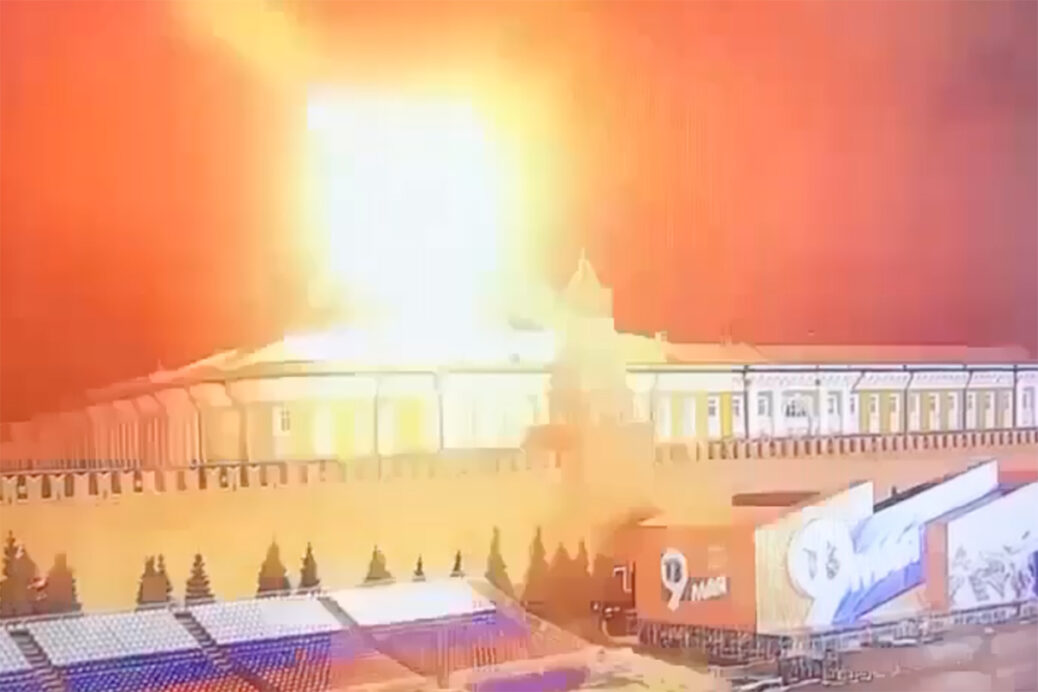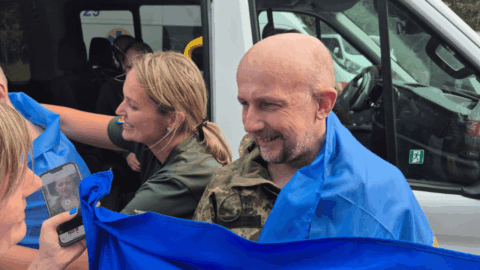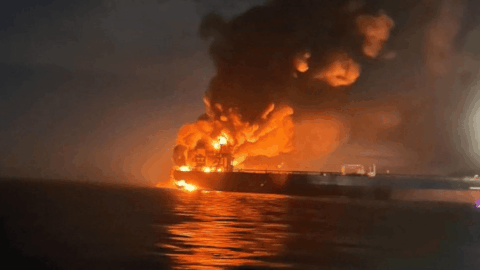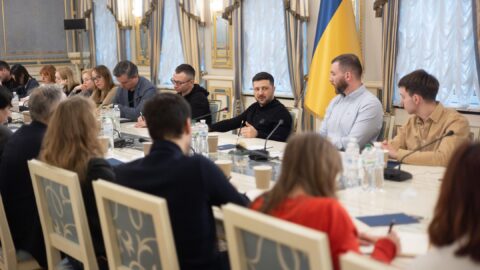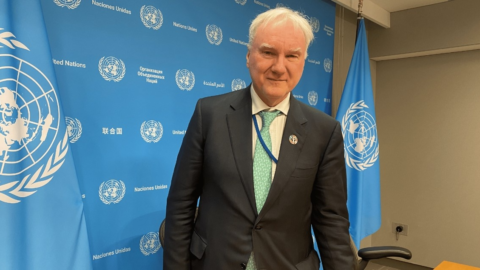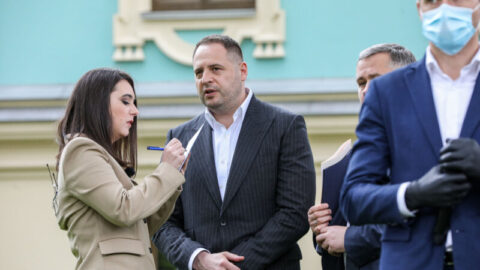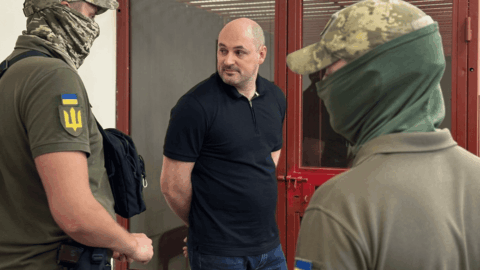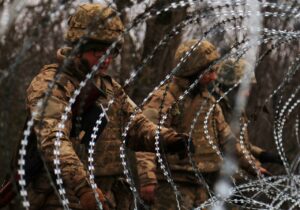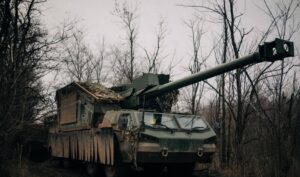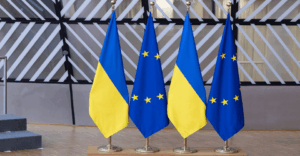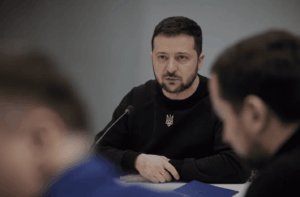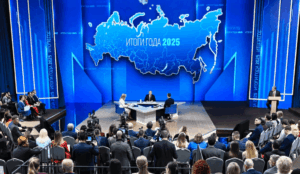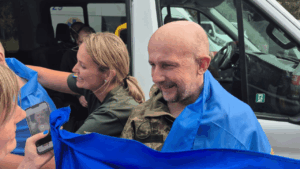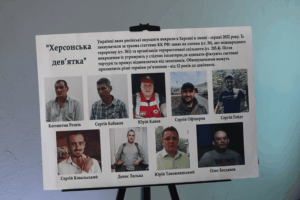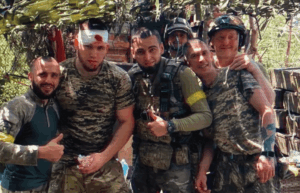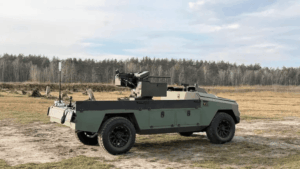Behind the closed doors of Kasyanov’s Drone Unit – a place that is no longer officially a military site, I saw what Ukraine risks losing — a cohesive, disciplined, and highly capable drone unit whose expertise can’t simply be replaced.
Every close-up we filmed, every erased note on the whiteboard, carried the weight of secrecy — and of loss.
This wasn’t just another military subdivision; it was a symbol of innovation and precision in Ukraine’s defense. To scatter these people now would mean dismantling one of the few teams that truly knew how to strike deep and strike smart.
Watch what the “Kasyanov unit” was — and hope that soon we can say is.
Dmytro Tuzov in an exclusive interview for Ukrainska Pravda.
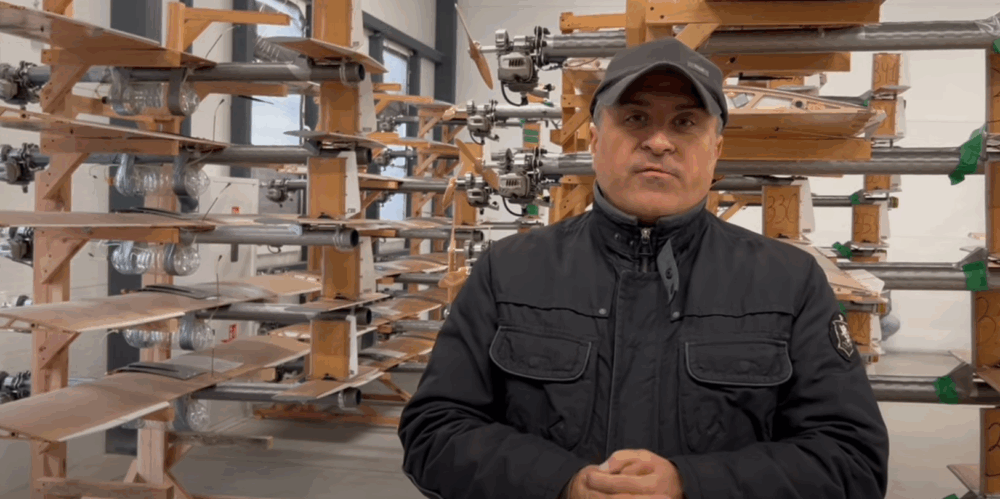
Will the combat unit be disbanded? This morning Yuriy Kasyanov called me and said: “You wanted to see the unit’s capabilities. They’re disbanding us. Come, I’ll show you what the unit was and what it had.” Immediately the question arose of how to film this, given the potential risks. I should say right away that the place the major invited me to is not a military facility. We immediately worked out the shooting format: work with close‑ups only, no panoramas, in landscape orientation, so that no ceiling fixtures would creep into the frame. We also removed any inscriptions and signs in advance. I even erased the technical notes from the whiteboard in the briefing room after the technicians’ briefing. While we were still at the base, and before the morning news that the company of long‑range unmanned systems was being disbanded, Yuriy Kasyanov added another sensational detail: that on May 3, 2023, a strike had been carried out on the Kremlin. Kasyanov reported this on his Facebook page.
For me the unit in question was a mystery wrapped in secrecy: where they operate, what capabilities the unit has, what kinds of combat tasks they carry out, what types of UAVs they have in service. For obvious reasons, in this video we can show only a portion of those capabilities. But even that, in my opinion, is enough to understand: the capabilities and the functional organization of the unit deserve that its cohesive, well‑drilled personnel be preserved as a fighting unit, and that people with experience and the necessary qualifications not be scattered across all fronts. That would be in the interest of the larger cause — the defense of Ukraine against our common enemy, the Russian Federation. And now watch what the “Kasyanov unit” was like. With the hope that the unit will be preserved and that we will be able to replace the word “was” with “is.”
Nataliya “Sarah Connor”: When a pilot takes the controller, he basically, well, kind of feels the whole flight process. So, there are also special exercises. For example, at first — takeoff, maneuvers, then more complex figures, then aerobatics. The team conducts a full check to see if all systems are functioning properly. This check is carried out according to a special checklist, meaning the entire functionality is fully tested.
If an enemy object approaches, people can go down. You see, there’s quite a serious depth here, so, well, you can wait out the danger here.
Dmytro Tuzov: Let’s go.
Valeriy Yarmol: An unpublicized unit that carries out its tasks on the front line is doing so successfully. Apparently, we bother someone a lot — like in 2015, when the volunteer battalions were disbanded. They want to disband this combat unit.
Dmytro Tuzov: But Yuriy Kasyanov announced today that the unit is being disbanded. What is your reaction?
Nataliya “Sarah Connor”: For us, this is really a huge shock and surprise, and I have no answer to why our effective work was suddenly stopped.
Dmytro Tuzov: Friends, today is October 3, 2025. Behind me are combat drones, and I have something to say. Yuriy Kasyanov called me today and said, “You wanted to see what’s in my unit? Let’s go, I’ll show you.” My first question was the safety of what we’re going to film. I have to say this is not a military facility. It’s a building specifically constructed to assemble drones. We’ve taken all security measures so the enemy can’t figure out where this is located. The geolocation on my phone, which is recording now, is turned off. We’ll be filming close-ups, for obvious reasons, so that no sensitive details appear in the shots. While I was here, Yuriy Kasyanov published a post on Facebook that literally says: “On the night of May 3, 2003, we successfully struck the Kremlin.” The unit Yuriy Kasyanov is affiliated with was also something of a mystery to me, because hot debates are going on in the media right now: who’s good, who’s bad, who did more for the victory, who did less. History will judge everyone. And I’m here to make sure the unit actually has capabilities. To my mind, the capabilities are serious for performing combat tasks.
Nataliya “Sarah Connor”: My name is Nataliya, sergeant of Yuriy Kasyanov’s unit. Right now there are over a hundred combat aircraft in this building. They are stored here. This facility was built entirely with private business funds and volunteer donations, for which we’re very grateful to everyone who supports our unit. Our unit comes here to receive aircraft. We also conduct tests of equipment and install additional gear needed for our work. The facility is completely safe; there is shelter here if necessary. And we also do everything necessary to make the site safe and concealed. Part of these drones are entirely government-ordered — the state orders them from manufacturers. And part were purchased with volunteer funds, with donations.
Well, first of all, it’s an inexpensive but quite effective tool. It can fly over 600 km. We use them specifically for operations behind enemy lines. Considering this range, we can ensure a safe launch from our territory, thereby providing maximum safety for our flight crews. Our crews are also fully protected with electronic warfare measures, meaning we provide cover for our crews ourselves. And the drones are equipped with tools to identify the results. We have a very professional analytical team that, well, basically handles the preparation and collection of operation results.
Dmytro Tuzov: I know that in many units, the existing material base is improved by their own efforts. Are you working on improving your equipment?
Nataliya “Sarah Connor”: We are constantly working on this. And in this, we are greatly helped by, well, the charitable foundation and volunteer contributions. In fact, a lot of what we have in the unit was purchased with volunteer funds: vehicles, computer equipment, software, and consumables. Our electronic warfare equipment is also fully equipped with volunteer funds and donations.
Dmytro Tuzov: And the charitable foundation — is it B-52?
Nataliya “Sarah Connor”: Yes, it’s the B-52 charitable foundation, created by Mr. Yuriy to support the unit. We’re all basically volunteers — that’s the core of our unit. Everyone is motivated: they came here to win, to do a common cause, to push back the enemy. The motivation is very high. We want to continue our work. We have a great professional team here. Just give us the opportunity to work.
Dmytro Tuzov: Please tell me, why did you choose this particular type of drones?
Nataliya “Sarah Connor”: Well, this platform is inexpensive and simple to manufacture. Its designer — you could say developer — was Yuriy Kasyanov. This development of his existed… well, the groundwork was laid even before the full-scale invasion. And in the process it was improved. It’s actively used in operations. So, Mr. Yuriy deserves a lot of credit for the main part of this platform’s design.
Dmytro Tuzov: So you based it on a prototype developed before the invasion, am I correct?
Nataliya “Sarah Connor”: Yes, yes. Mr. Yuriy has been working on drones since 2014. Among his developments are many different types, and now his idea is at the core of new systems that are already being tested.
Dmytro Tuzov: Right now, in the unit we’re also working with manufacturers to develop new systems for different tasks and purposes. We already have developments and tests under way. Since we all understand that this is a technological war and the battlefield is changing dynamically, the enemy’s countermeasures are also being modified very quickly. We keep our finger on the pulse, developing new tactics to bypass enemy air defenses. We’re also focusing on new systems. We run training, recruit specialists for these tasks. And since we have certain developments, we also need people. Most people come to us by recommendation from their comrades, because the unit works very effectively. Our conditions are very good, and people are treated with dignity and respect. And I believe a strong indicator is that over our years of work there have been no losses or injuries in the unit.
Dmytro Tuzov: Nataliya, we’re now at the simulator. Please comment on how the process works here.
Nataliya “Sarah Connor”: Well, that’s basically how training happens. There are special programs that fully simulate flight — all the flight physics. And when a pilot takes the controller, he basically, well, kind of feels the whole flight process. There are special exercises: for example, at first — takeoff, maneuvers, then more complex figures, then aerobatics. And the most important thing is hitting the target, because the goal of training is to inflict damage on the enemy.
Dmytro Tuzov: Do you train both FPV pilots and Deep‑striker pilots here?
Nataliya “Sarah Connor”: Yes. As I said, we train on different platforms, because, first of all, the war is changing dynamically. Today you’re a pilot of one craft, tomorrow another. But that also gives a person an understanding of how different systems work.
Dmytro Tuzov: This bomb shelter here — I understand it’s a pretty serious shelter. Nataliya, tell us, it’s designed to withstand, God forbid, a fairly heavy strike, right?
Nataliya “Sarah Connor”: Yes, we understand that the site is of interest to the enemy, and of course we have to ensure the safety of everyone who works here. When an air‑raid alarm sounds and some enemy object approaches, people can go down — you can see there’s quite a serious depth here. You can wait out the danger here.
Dmytro Tuzov: Let’s go. So, do you feel sufficiently safe in this shelter?
Nataliya “Sarah Connor”: We’re located fairly deep underground; the space is ventilated, there’s water and everything necessary. People who work here can continue their tasks during an alarm. There are tools to carry out missions. You see, there are turnstiles, a first‑aid kit — so in case of any situation people can provide help to themselves. And most importantly, there’s an additional exit — so if, God forbid, something happens, there’s a way to leave the facility without injuries.
Dmytro Tuzov: By the way, what’s your situation with training unit fighters in tactical medicine?
Nataliya “Sarah Connor”: Well, that’s a significant part of the unit’s overall training. We have a really great instructor who has gone through many different courses. And besides the theory, which is very important, he also organizes various simulated scenarios where we practice everything — from providing aid, that first aid, to evacuating a fighter.
Dmytro Tuzov: Your drones are classified as Deep Strike, right?
Nataliya “Sarah Connor”: Yes.
Dmytro Tuzov: And how do you track the unit’s results?
Nataliya “Sarah Connor”: First of all, the aircraft themselves have means to track, for example, the point where the aircraft hits or where it ends its flight — for instance, if it’s shot down by air defenses or enemy EW. But there are also OSINT methods. Our team of OSINT analysts actually monitors this through enemy news and enemy chats. And there are other, specialized intelligence methods as well.
Dmytro Tuzov: Do you have your own team of OSINT analysts who gather all this information?
Nataliya “Sarah Connor”: Yes, yes. That includes IT specialists and OSINT analysts — basically people who, using specialized military programs and by monitoring the internet and social networks, track this information.
Dmytro Tuzov: And what would you say about the unit’s effectiveness?
Nataliya “Sarah Connor”: The main thing, you know, is that these systems aren’t very expensive, but the outcome is always positive. Because even the cost of countering enemy air defenses already far exceeds the cost of these systems. What we’ve focused on is closing enemy airports. For example, already as of 2025 we know that 10 airports on Russian territory are no longer operating. And of course that’s the result of the work of all defense forces — and it’s a huge economic loss for the enemy. Airport closures, power outages, internet outages, strikes on defense-industrial facilities — all of that is among our unit’s results. And I’ll say again: even if only enemy air defenses are working against us, the damage they inflict far exceeds the cost of our systems.
Dmytro Tuzov: Nataliya, we’re now in a room where many people usually stay. We asked everyone not to show their faces and to leave. We paused the process. But what usually happens here?
Nataliya “Sarah Connor”: This is the aircraft inspection room — after they come from the factory the team conducts a full check to see if all systems function properly. This check is carried out according to a special checklist. In other words, the entire functionality is fully tested: engine operation, fuel system, electronics, navigation, and so on.
Dmytro Tuzov: How long does training a skilled pilot take?
Nataliya “Sarah Connor”: Well, it’s actually a long process. First, a person trains on a simulator. That can be a few weeks — three, four, or more. Then they start with small models out in the fields to practice those skills. We train pilots on different platforms: at first the simplest — the well-known “Mavics” and “Autels.” Then there are model aircraft, including FPV drones, to build coordination. And the final stage, when the person is confident, is training on special trainer aircraft that are replicas of combat planes. So the process can take from one and a half to three months. It’s very responsible work.
Dmytro Tuzov: Nataliya, I see some slightly beat-up airframes here. What happened to them?
Nataliya “Sarah Connor”: These airframes were damaged during training. They are full-scale mockups of combat aircraft. Pilots practice flying skills on them. As for the damaged ones — yes: one has a broken propeller, another is missing an engine. The manufacturers we work with — we’re preparing these for return to production so they can be repaired and we can continue training. Repairs are done free of charge. And when, for example, a frame arrives and we see some mismatch or it doesn’t work correctly as we need, we return it to the factory, where they replace or repair the equipment.
Dmytro Tuzov: You said “mockups.” These are flying mockups used to practice flight maneuvers, right?
Nataliya “Sarah Connor”: Yes, yes. It’s fully flyable — only the combat section is missing. These aircraft are reusable, since even a training platform is quite expensive. So we repair them and use them again.
Dmytro Tuzov: How long have you been fighting?
Valeriy Yarmol: Since 2014 — I went to a volunteer battalion in 2014. And from 2014, except for two years in hospitals, I’ve been fighting ever since.
Dmytro Tuzov: Are you currently on active duty in the Defense Forces?
Valeriy Yarmol: Yes, on active duty. Sergeant, commander of a fire-support group. Go ahead and film me — on all the separatist sites they’ve been calling for my destruction since 2014. So there’s nothing for me to be ashamed of now.
Dmytro Tuzov: What would you say about the unit?
Valeriy Yarmol: An unpublicized unit that carries out its tasks on the front line is doing so successfully. Apparently we bother someone a lot — like in 2015, when Dobrobaty were disbanded. They want to disband this combat unit. Who benefits from that? Well, someone is looking after their political career, and someone simply cares about the country, their family, about, how to say, the lives of our families and comrades. Who benefits? Time will tell. Lessons were already learned when Dobrobaty were disbanded — they’re being reformed. And disbanding this unit would be a crime, Mr. President. Something like that. In my unit there are combat guys, three holders of the Golden Cross. Go ahead and disband us — let’s see.
Dmytro Tuzov: What do you do in the unit?
Valeriy Yarmol: My group is the protection of the drone operators while they work. Protection and, well, we are a rifle group, a fire-support group. When the guys operate, we make sure nobody touches them. There have been no losses in this unit over two years. Glory to Ukraine!
Dmytro Tuzov: Glory to the heroes! Thank you.
Friends, we’ve just shown you some fragments of life in the long-range drone company. We did this, I believe, as carefully as possible from the standpoint of information hygiene. We ran around covering various signs and inscriptions so nothing would appear in the shots and showed you only a piece of how the unit lives. At the start of this piece I said that, in my opinion, the long-range drone company has serious capabilities to accomplish assigned combat tasks. But you know, I’ll say more: it seems to me these are capabilities to carry out very serious combat tasks. And, in my personal opinion, this experience needs to be scaled up. I have no doubt that after this material, so to speak, a significant number of people will want to work and serve in the unit. That’s my view, and I think this experience should be used and scaled within the Defense Forces of Ukraine.
Tags: 2025 news air warfare drone unit Matrix-UAV military controversy russia - ukraine war UAV strikes ukraine war Yuriy Kasyanov
